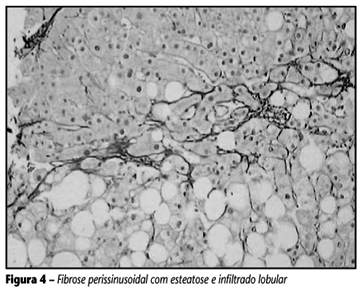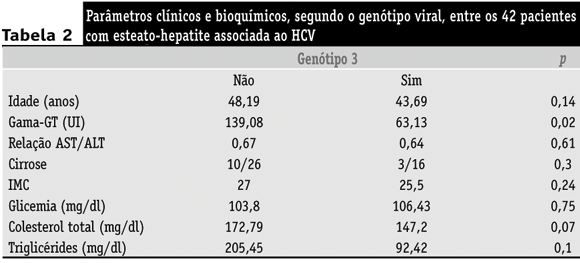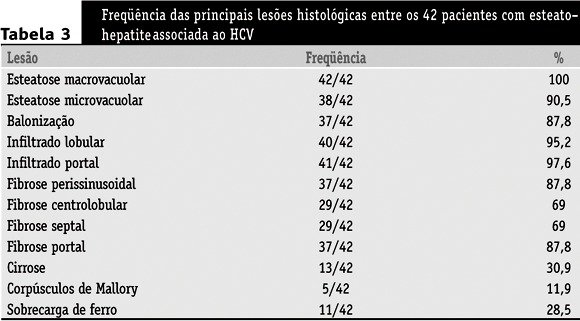INTRODUCTION: Steatohepatitis and hepatitis C virus (HCV) have been related to several clinical and virological factors and fibrosis progression. OBJECTIVE: To describe clinical and morphological aspects of steatohepatitis associated to HCV. METHODS: The study included patients with HCV without treatment. Biopsies were evaluated by METAVIR score and steatohepatitis was evaluated according to criteria of Sociedade Brasileira de Patologia (SBP). Clinical parameters included alcoholic intake history and determination of risk factors for non-alcoholic steatohepatitis (NASH). RESULTS: Steatohepatitis was observed in 42 out of 252 patients (16.6%) with HCV, and 76.2% were male. Risk factors for NASH were present in 37.5% of the patients with genotype 3 and in 73% of the patients with other genotypes (p = 0.05). Obesity was present in 16.7%, diabetes in 16.7%, hyperlipidemia in 21.4%, and genotype 3 in 38.1%. Macrovacuolar steatosis presented mild intensity in 61.9% and was diffuse in 64.3%. Cirrhosis was present in 33.3% of the patients. CONCLUSIONS: Diffuse steatosis and ballooning of mild to moderate intensity characterized steatohepatitis related to HCV. Patients with genotype different from genotype 3 presented with known risk factors for NASH, whereas most of the patients with genotype 3 had only viral genotype as risk factor for steatosis. The frequency of cirrhosis was relevant and suggests that the association of steatohepatitis with HCV contribute to fibrosis progression.
Steatohepatitis; Steatosis; NASH; Hepatitis; HCV







